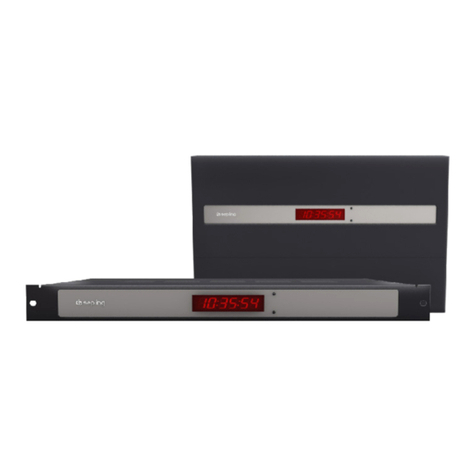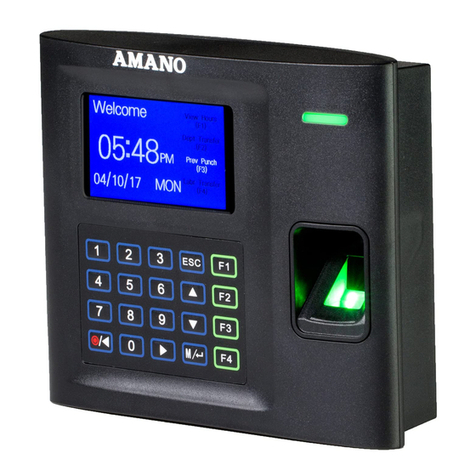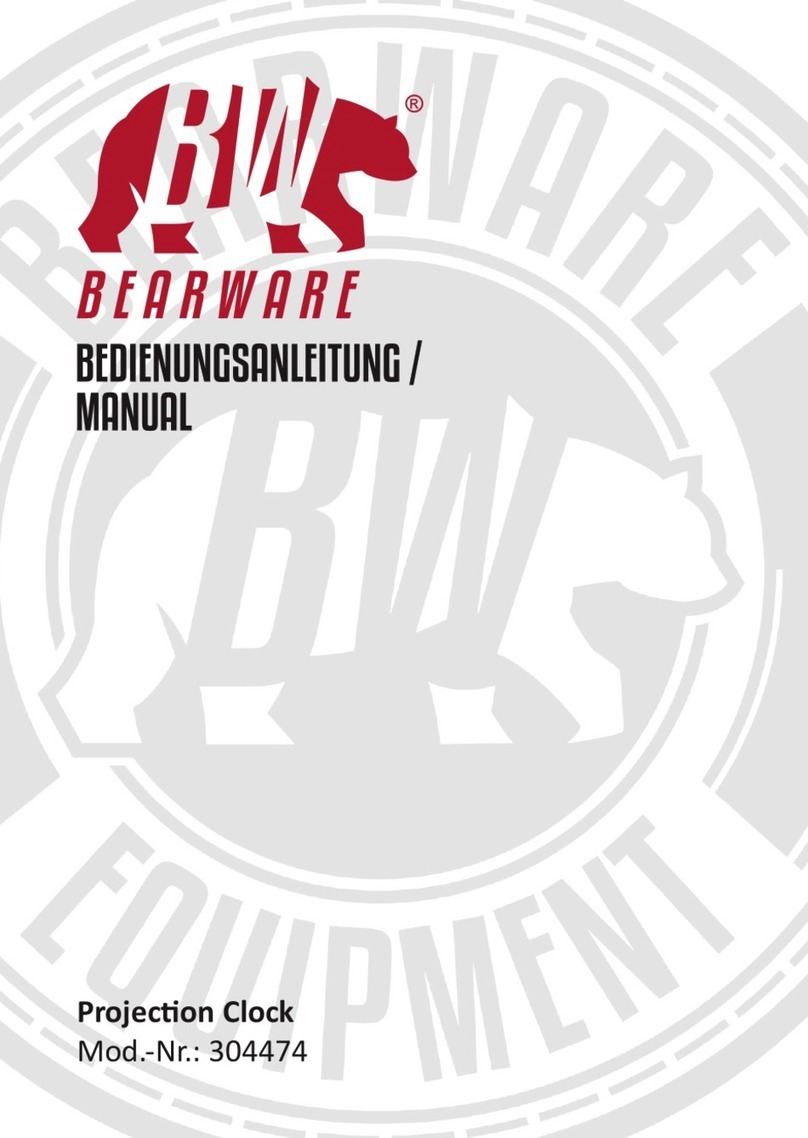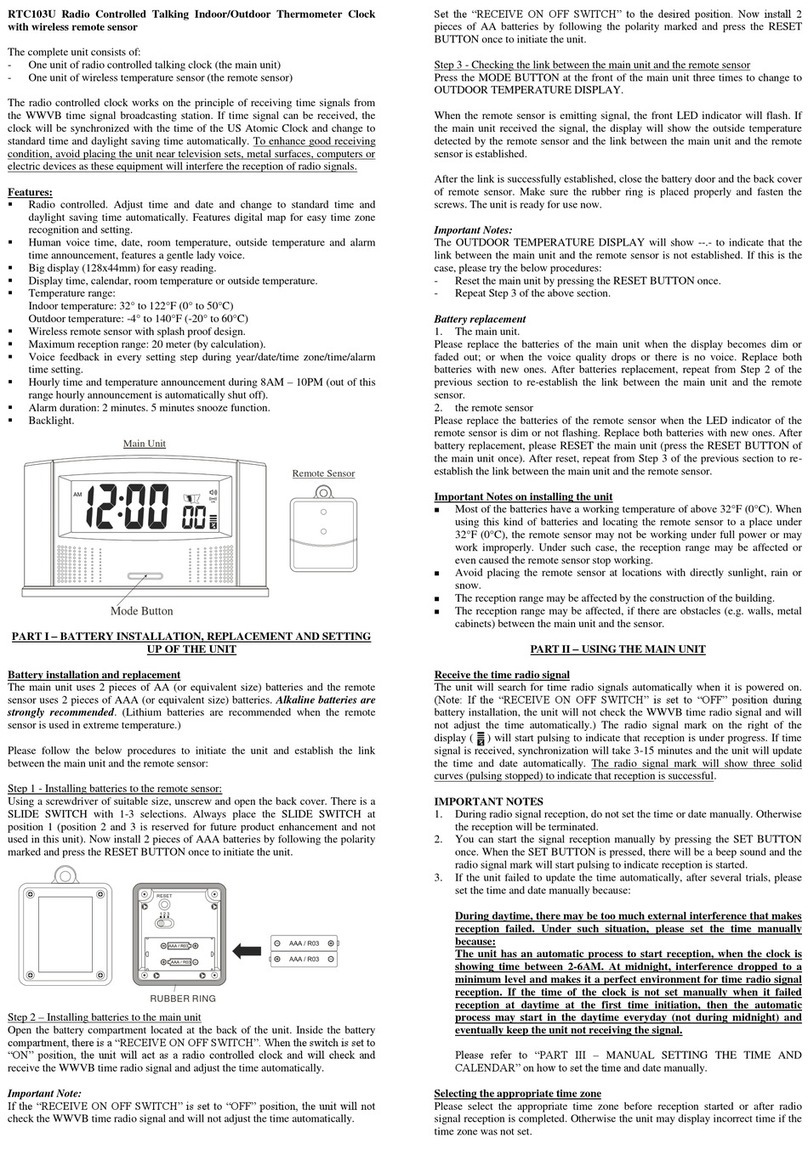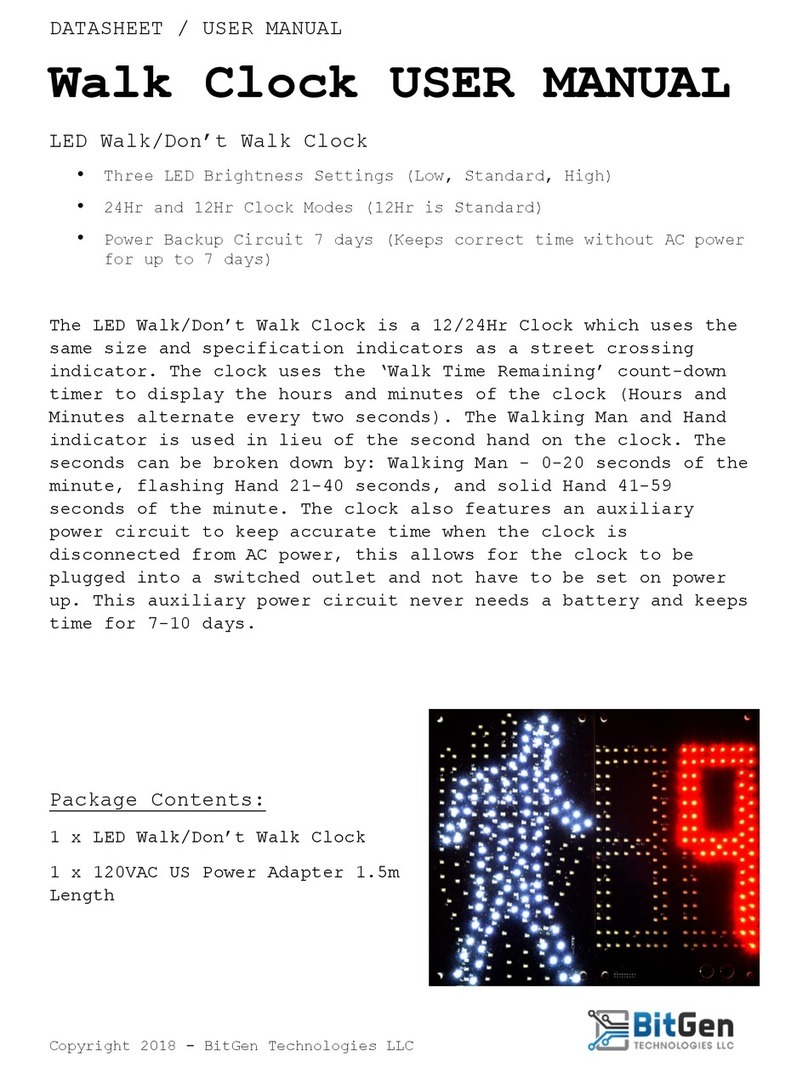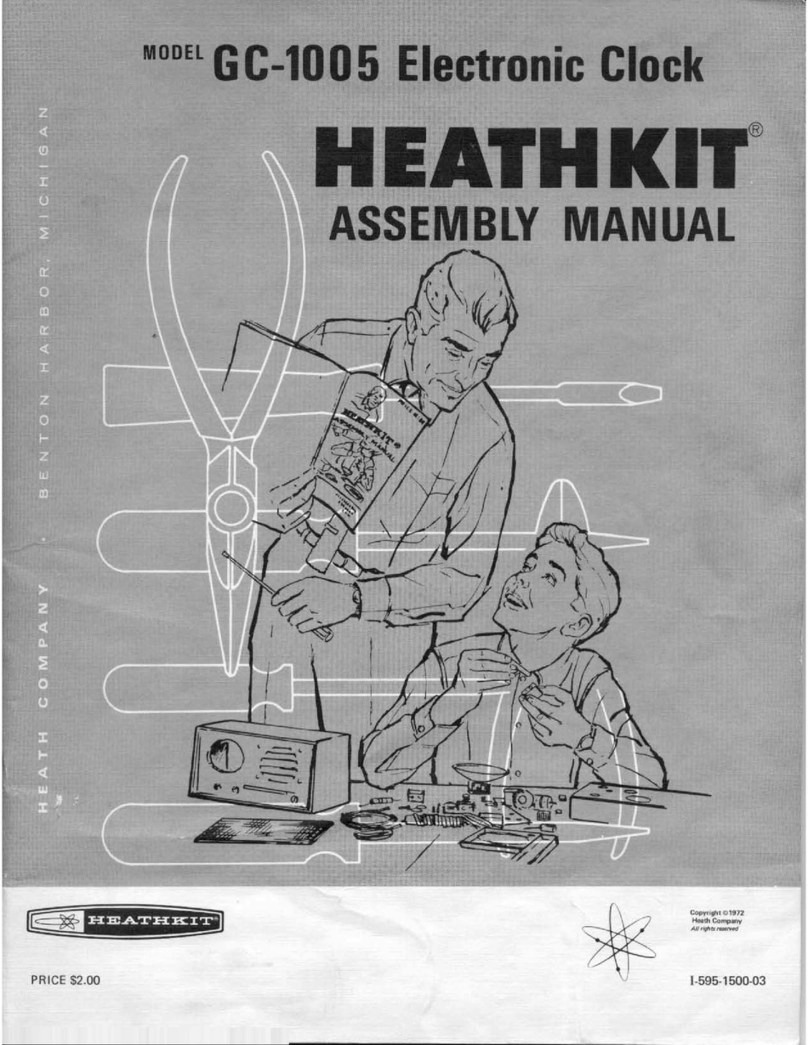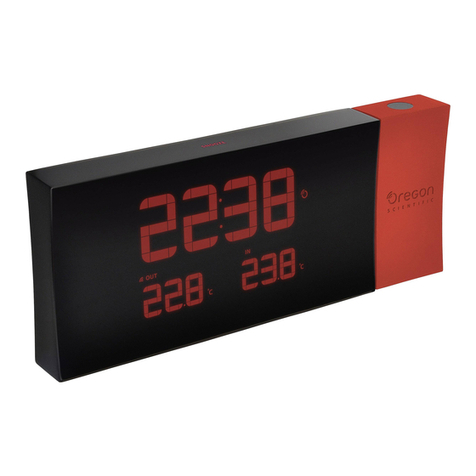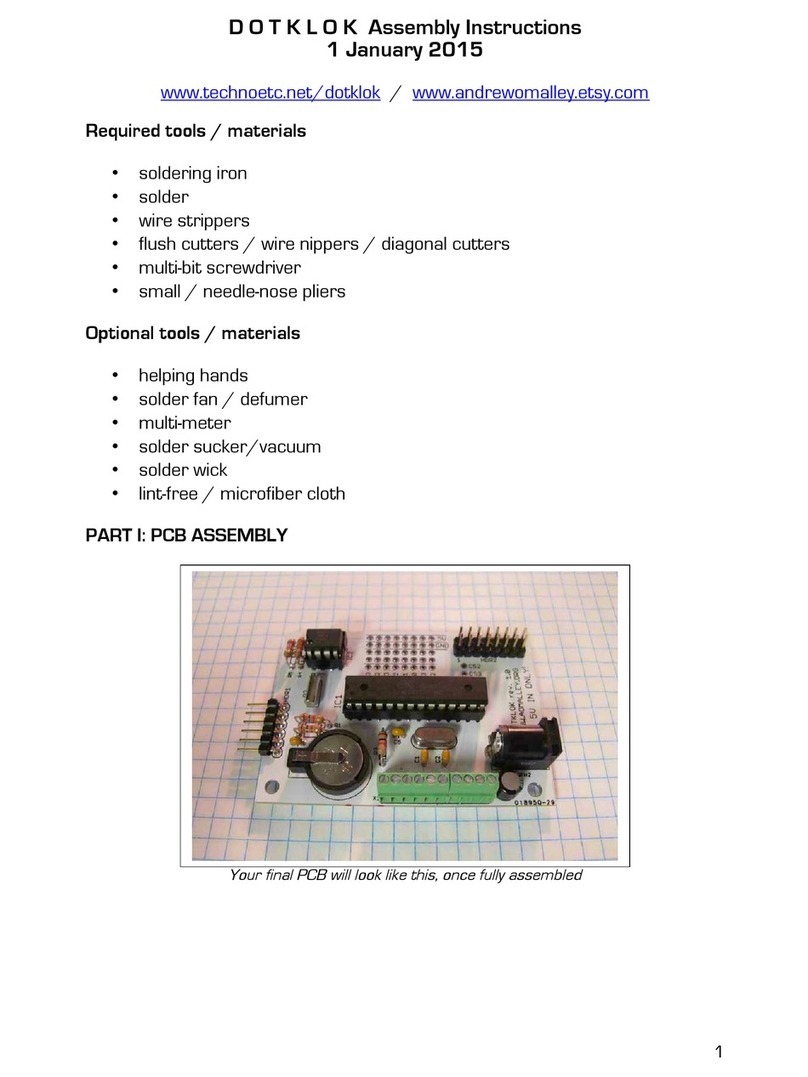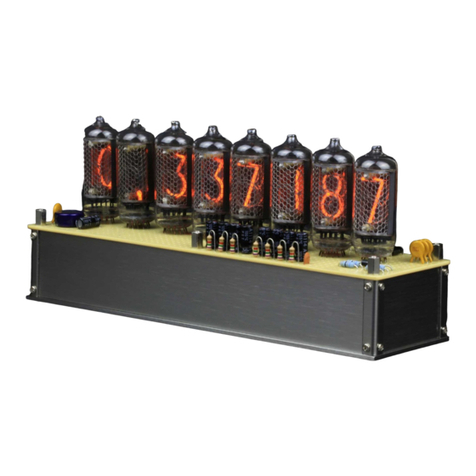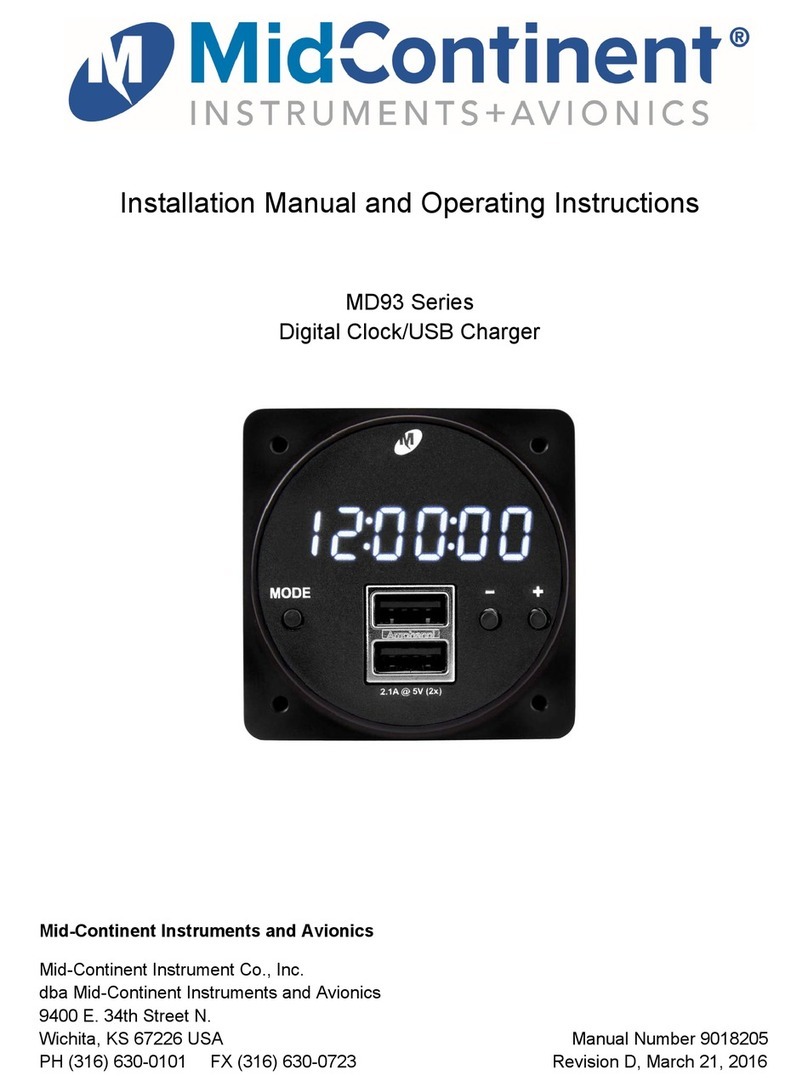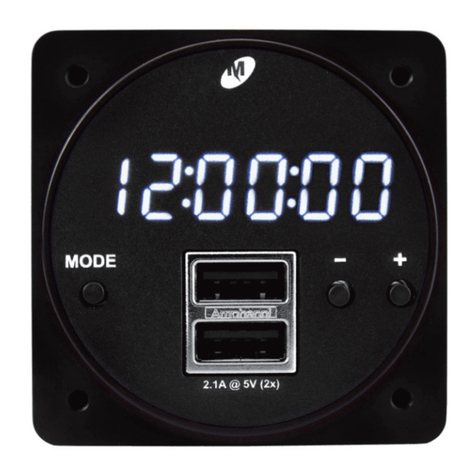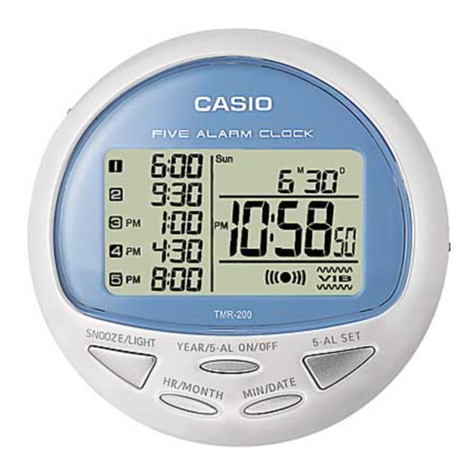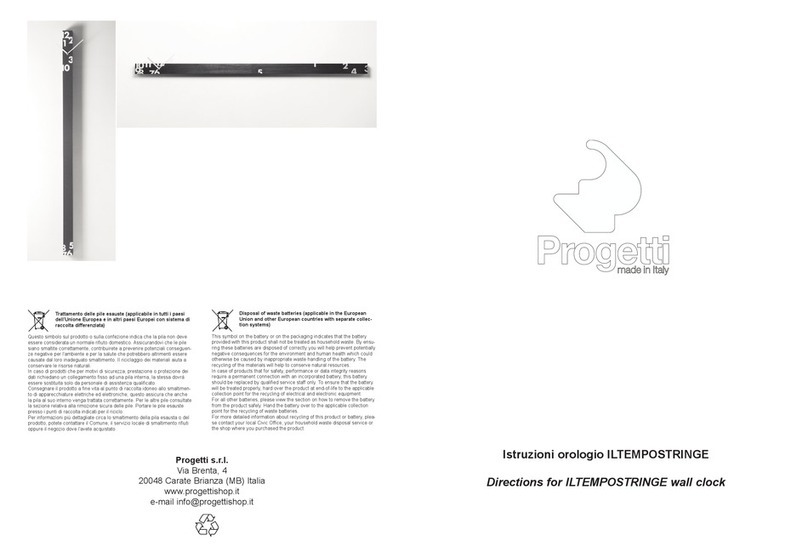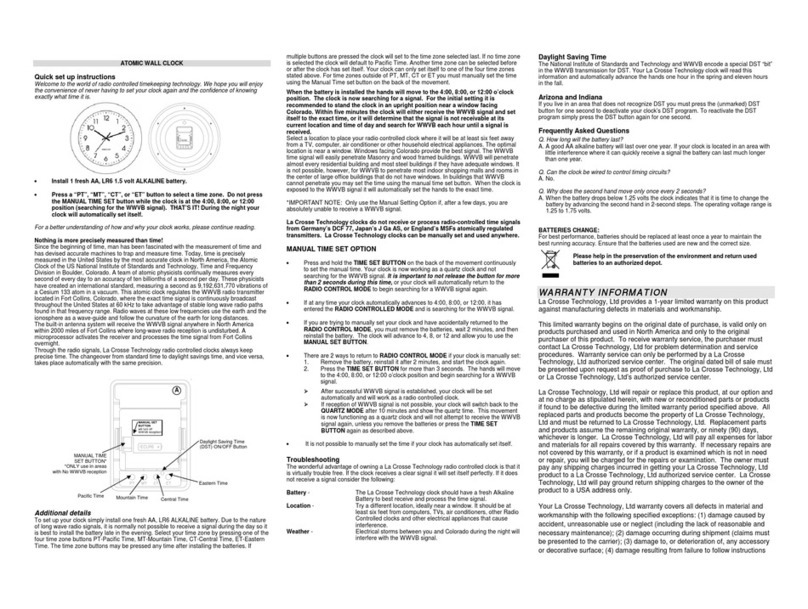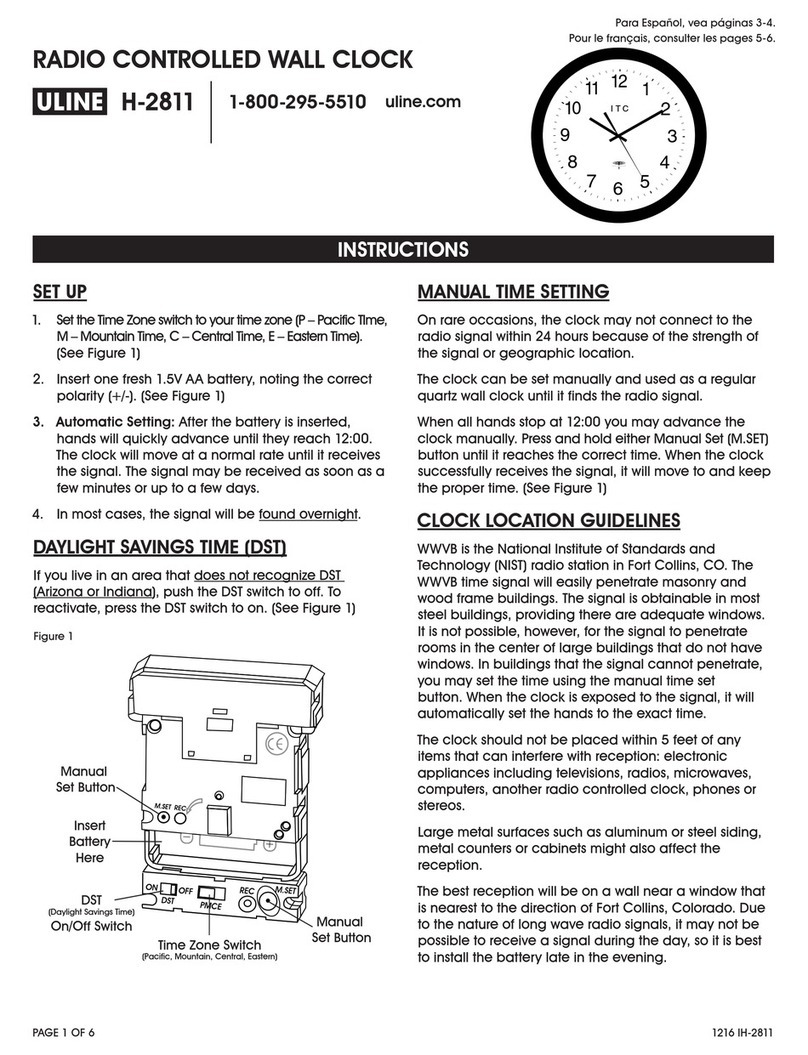
Manual Number 9018205 Revision F, April 1, 2021 4
SECTION 1 GENERAL DESCRIPTION
1.1 INTRODUCTION
The CH93 series, part numbers 6420093-( ), is a multi-function digital clock / chronometer /
voltmeter / temperature unit with multiple options for USB Charging Ports. The unit fits into a
standard, rear-mounted, 2-¼” avionics panel cutout. Power is drawn from the aircraft main bus to
light a white, six digit, seven segment LED clock. The clock can display several different modes:
local time, universal time, flight timers, elapsed and countdown timers and optionally, bus voltage
and up to two temperature inputs. The CH93 display is daylight readable with two methods of
brightness control. It can be controlled automatically using the internal photocell or manually with
an external dimming bus voltage. The CH93 clock has an internal battery to maintain clock time
and flight timer memory when the aircraft is not in use.
The USB Charging Ports are designed as DCPs (Dedicated Charging Ports) to industry-standard
protocol per the USB Battery Charging 1.2 Compliance Plan. Some models also comply with the
higher power requirements of USB Power Delivery 2.0 and 3.0. Early-generation or smaller
consumer electronics typically accept one (1.0) amp during charging. However, newer electronics,
such as tablets and larger devices can accept, and in some cases, require up to 3 amps to charge
and operate. Unlike most dual USB chargers which provide one (1.0) amp on one port and 2.1
amps on the second port, the CH93 provides 3 amps per port. The Type A High Power (HP) USB
ports provide a 5 volt output at 3 amps and the Type C Max Power USB-PD port provides 3 amps
at 5, 9, 15, or 20 volts depending on the type and needs of the device. This provides enough
power to charge any USB device, including the higher demand products. Refer to Section 1.4 for
specific details on charging port configurations for each model. With features like short circuit
protection, over-current protection, low voltage shut-down and temperature monitoring, it handles
abnormal conditions safely.
1.2 PHYSICAL ATTRIBUTES
The CH93 is a single, integrated component contained in a metal enclosure, fitting into a standard
2 ¼” avionics instrument panel cutout. Two types of units are available within the series. Type 1
units have a 4-pin input connector on the rear of the unit for power, external dimming control and
flight timer operation. Type 2 units have a 9-pin D-shell connector that add connections for
temperature probe inputs and a countdown timer external alarm signal. The series includes
versions with and without USB charging ports, located on the front of the unit below the display,
and three control buttons for user interface: Mode, + (plus), and – (minus). The modes are
annunciated with backlit indicators for UTC, Flight, Timer, Volts, and OAT.
Refer to Figures 1.1 and 1.2 for unit dimensions.
